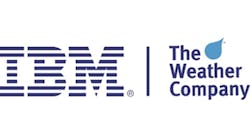What to do about the weather? IBM has an idea. The company, on March 31, announced a partnership with The Weather Company to integrate real-time weather insights into business.
The Weather Co. and WSI its global B2B division, provides 10 billion discrete forecasts per day including the collection of data from 100,000+ private weather sensors, aircrafts, millions of smartphones, buildings and even moving vehicles.
IBM envisions this collaboration as a way to mitigate the “single largest external swing factor in business performance – responsible for nearly half a trillion dollars in economic impact in the U.S.”
By combining IBM’s cloud computing with WSI’s weather data and forecasts, the two companies can now enable entire industries to utilize understanding of weather on business outcomes and take action at a local level. For example:
- Insurers pay more than $1 billion in claims every year for vehicles damaged by hail. WSI’s Weather Alert service, together with IBM Analytics, enables insurance providers to send policyholders text messages that alert them to impending hailstorms – and safe locations – so vehicles can be moved before damage occurs. These insights have the potential to save insurers up to $25 per policyholder per year in hail-prone areas, or millions of dollars annually.
- Each winter, retailers in snowy areas see patterns in which storm forecasts drive spikes in sales of groceries, shovels, sand, salt and cold-weather gear. Yet those same weather events typically hamper retail sales as consumers stay inside. But differences can be profound – during the January 2014 polar vortex, areas with greater than 10°F drops in temperature saw sales fall 15.5% while areas with a less than 10°F drop saw sales fall only 2.9%. The ability to better understand and predict the impact of such weather events allows retailers to adjust staffing and supply chain strategies as needed – regionally and nationwide.
- Utility companies feel the impact of an increase in temperature and relative humidity – even just a few degrees – dramatically in air conditioning use and power consumption. The difference between 90 and 95 degrees in Texas, for example, can equate to $24 million more in electricity spending per day. With IBM and WSI, utilities will be able to more accurately predict power consumption so they can avoid overproducing power, reduce service interruptions and better serve customers.
“This is a watershed moment for businesses that have long been impacted by weather but haven’t had the rich data or enhanced decision-making ability to drive positive business outcomes,” said David Kenny, CEO of The Weather Company. “The combination of our new high-resolution forecasting capabilities with IBM analytics opens up a world of possibilities for the enterprise.”



